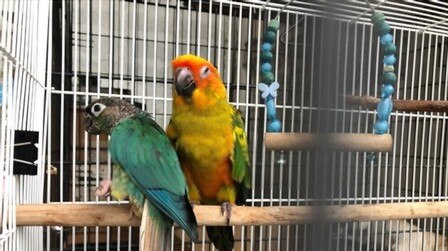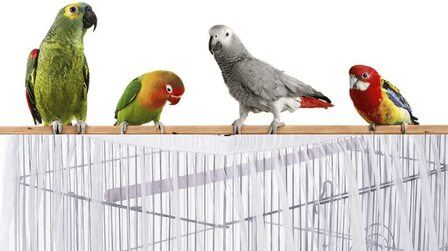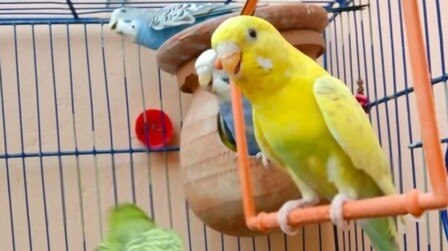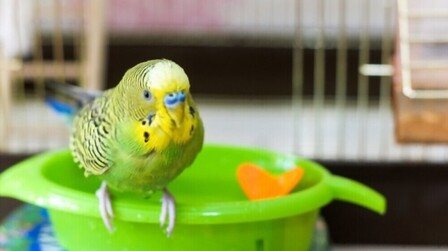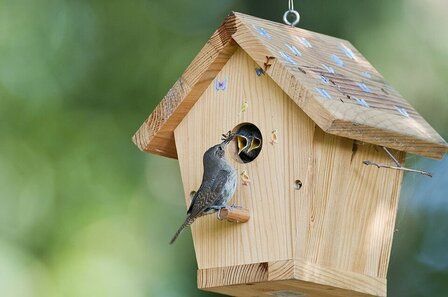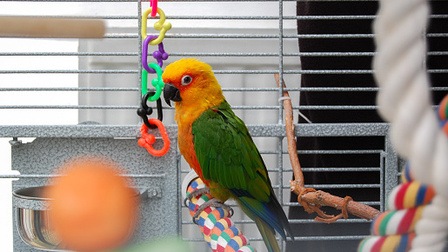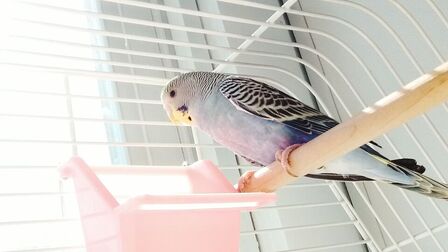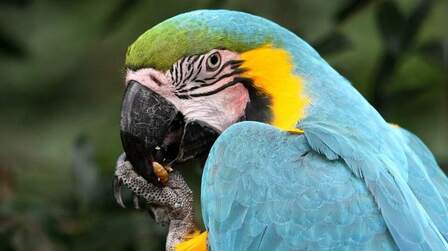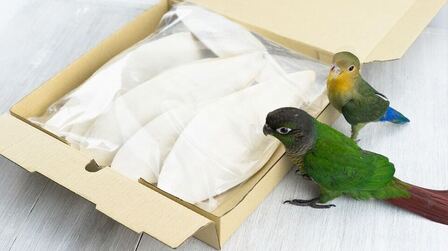For the most part, toys and play are extremely important in the development of your bird. Some studies suggest that birds learn primarily through play.
Toys are more than just entertainment in a bird's life. It also helps educate, refine instincts, encourage exercise, and keep the beak busy. Altogether, these benefits support the bird's overall health and well-being.
It is very common for birds to get bored easily and develop problems of behavior. Toys will help with this by keeping the bird so busy that it won't resort to feather picking or excessive screaming.
To better understand, below are some benefits of bird toys you need to know.
1. Benefits of bird toys
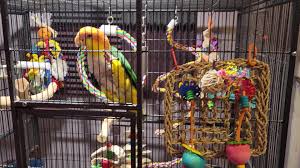
Toys help the bird fulfill its instincts by allowing it to chew, shred, and tear. It contributes to a bird's instinct to rip through everything with its beak. This helps the bird chew on the toy, keeping its beak in shape. Furthermore, another instinct that toys respond to is the need to feed.
Since pet birds spend most of their time on their feet, interactive toys help birds stay active and active.
The toy also gives the bird a challenge and encourages him to solve a problem. With puzzles, create an engaging environment and motivate your bird to use problem-solving skills.
If you want to add extra stimulation to your bird, give them toys that come in a variety of textures, sounds, sizes, smells, and colors.
Toys are essential for a bird's physical and mental health. Choose toys that match your bird's size and personality. Because large birds can suffocate because the toys are too small, and small birds can be scared by toys that are too big.
2. Types of bird toys
Foraging toys

It provides an excellent outlet for requiring the bird to work for food as it will have to do most of the day in the wild. These are toys that can be hidden, skewered, and or dipped in. It should be placed at various levels in the cage to encourage movement and exploration.
Chewing toys

Chewing is a predominant activity in the wild, especially during the breeding season when birds actively dig nests into tree trunks. Birds must be provided with destructible wooden toys. Wooden and leather toys provide hours of safe chewing.
Chewing is a natural activity for birds and they should be allowed to do so. Larger birds should be challenged with harder wood. Some materials made from balsa, pine, or vines are great for smaller birds.
Comfort toys
In the wild, birds prefer physical contact with their mates, often snuggling up in branches. Cage birds, when they are alone, like to snuggle or snuggle into something soft and cuddly. It will relieve stress and provide a sense of security. As comfort toys are the Peekaboo Perch Tent and Hugs.
Gym toys

Swings and bungees are often great choices for toys that encourage movement and provide birds with an outlet for exercise.
Preening toys

Times of depression and stress in caged birds can often lead to excessive plucking or plucking. Rope preening toys will provide a great outlet for birds to satisfy their preening desire.
Manipulative/mechanical toys

Birds are considered very intelligent and inquisitive creatures. Sometimes it likes to untie knots, unscrew nuts and bolts, and dismantle the cage to escape. Provide puzzle and manipulation toys that will mentally stimulate these birds.
We recommend investing in a variety of toys, but remember that it's important to rotate toys in and out of the cage weekly to stimulate curiosity and avoid boredom.
3. How to choose the materials for the bird toys?

- Wood: made wood from safe trees such as pine, bamboo, birch, balsa, dogwood, hickory, Douglas fir, walnut, and apple. However, some that are unsafe include cherry, cedar, oak, and plywood. Make sure any colored wood has been stained with non-toxic vegetable dyes or food coloring.
- Rope: is a common ingredient in bird toys. Choose ropes made of 100% natural fibers, such as hemp, cotton, sisal, or jute.This material should be stored properly and frayed ropes should be cut back as needed as they can be dangerous to pet birds.
- Leash: used on bird toys must be welded and free from open links that may have sharp edges. This ensures that the leash is not too small as it could get caught in the bird's toes. Also, consider the length of the leash as too long a leash can wrap around the bird.
- Leather: new vegetable tanning is used to make bird toys. Limit the use of leathers that have been dyed or tanned using chemicals that are toxic to birds. Leather should be replaced whenever wet or dirty.
- Bells: need to be well connected and birds cannot disassemble the pieces, posing a choking hazard. Avoid bells that use jingle bells because birds' toes can get caught in narrow openings.
4. How do toys last longer?
The way to prolong the life of bird toys is to rotate them regularly. Instead of throwing away, you can rotate the toy regularly, taking the opportunity to replace any damaged parts.
Or maybe replace the broken parts and give it to the bird another day. Moreover, you can remove the fine arts from the toy and put them in the bird bowl. Another way is to thread the leftover parts together to make a new toy.
To prolong the life of bird toys is to keep them clean and safe. Always inspect them for loose or loose wires, trim these parts, and make any necessary repairs. It will ensure that the bird will not get hurt by the toy.
It is important to buy toys that are full of different components and features. Toys that often require a lot of mental stimulation will take a long time to visualize, and toys with other textured components will be destroyed at different rates. It is also beneficial to buy toys that you can keep refilling, like the Foraging Bird Toy.
5. How often will you need to change parrot toys?

Toy wear can happen, some of which can lead to injury if you don't change the toys.
Look for cracked plastic and frayed cords sticking out of toys. Also, watch out for dirt on toys. If you see this problem, be sure to take out the toy. Do not attempt to clean or attempt to repair the toy at this time. Instead, throw it out and add a new toy to the cage.
In which, the mirror is a toy most misunderstood. In fact, for small birds like macaws and parakeets, a mirror is a necessity. And it's very rare for a macaw or a macaw to get too attached to the mirror, but if you do, the mirror can be taken away.
It is also a friend in the absence of the owner, usually medium to larger birds such as macaws, macaws and parakeets are not given toys with mirrors, as they are often too attached. mirror and thus act aggressively towards the master.
In addition, smart and feeding toys are very popular for manufacturers to provide and this is good for birds as it is important to provide birds with items that keep them busy. Some of these toys may contain food inside that the bird cannot get to easily and must find a way to get the food out.
Furthermore, chewable objects such as wood and ropes can be placed inside the toy in such a way that the bird must carefully manipulate the toy to retrieve the contents.
Conclusion
Yes, bird toys are important for your parrot's physical and mental health. In fact, for some professionals, toys can be as essential as providing your parrot with the right food and nutrition daily.
Let's start to learn and choose a suitable toy for your parrot.

